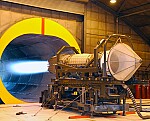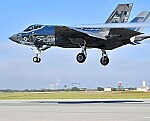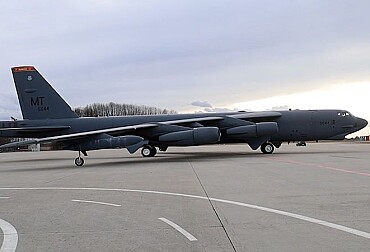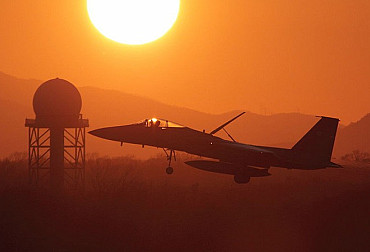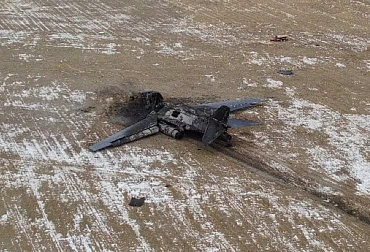Su-34 Fullback, an Istrbitel-Bombardirovchik based on Su-27
The Su-34, known by NATO as the Fullback, is a Russian tactical bomber developed by Sukhoi in the Soviet Union and later in Russia between 1980 and 2000. Its first flight took place on April 13, 1990, and it officially entered service in 2014.
The need to replace the MiG-27, Su-24, Su-25, and even the aging Tu-16 and Tu-22M led Sukhoi to design a bombing variant of the Su-27 Flanker. This new aircraft was intended to carry laser-guided weapons. Initially named the Su-27IB (Istrebitel-Bombardirovchik, meaning fighter-bomber), the project was led by R.G. Martirosov under the supervision of Simonov, with the design completed in 1988.
The aircraft was significantly modified, becoming a side-by-side two-seater to improve pilot coordination. The crew can access the cockpit via a ladder. The Su-34 is often said to include a toilet and galley, but in reality, it features a container that functions as both a urinal and a thermos flask for extended missions. The cockpit is spacious enough for crew members to stand and even lie down. It is protected by 17 mm titanium armor and equipped with multifunction screens and two Zvezda K-36DM Zero-Zero ejection seats. Additional armor was added to the central fuel tank and engine nacelles, increasing the total weight by 1,480 kg, necessitating a switch from single-wheel to dual-wheel landing gear.
Fuel capacity has been increased to 12,100 kg, with some integrated into the enlarged vertical stabilizers. The aircraft features canard planes for improved stability and reduced turbulence. To prioritize low-altitude performance over high-altitude speed, variable-geometry air inlets and keels were removed, lowering the maximum speed. The tail cone was extended to house a Leninets V005 radar, while the parachute was relocated to the upper fuselage. The modified, flattened nose accommodates a Leninets V004 multimode terrain-following radar, earning it the nickname "Platypus" (Ornithorhynchus).
The first prototype, a modified Su-27UB designated T-10V-1, made its maiden flight on April 13, 1990, piloted by Anatoly Ivanov. Static testing was conducted on the T-10V-0 and T-10V-3. The second flying prototype, the T-10V-2, named the Su-34, had its first flight on December 18, 1993, piloted by I.V. Votintsev and Ye.G. Revunov. The collapse of the USSR and budget constraints severely delayed the program, with state testing concluding only in 2003. By this time, two prototypes and four pre-production aircraft (T-10V-4, T-10V-6, T-10V-7, and T-10V-8) had been produced. The Su-34 designation refers specifically to the version intended for Russian service.
The aircraft boasts 360° radar coverage and advanced electronic warfare capabilities, including the Khibiny electronic countermeasures system (jamming, decoys, and detectors). It also features UOMZ Platan optical, laser, and infrared sensors. Although primarily a tactical bomber, it can perform anti-ship and anti-submarine missions. Its armament includes Kh-29T, Kh-29L, Kh-25ML, Kh-59M, and Kh-31A air-to-ground missiles; R-27, R-73 (NATO: AA-11 Archer), and R-77 (NATO: AA-12 Adder) air-to-air missiles; KAB-500Kr and KAB-500L bombs; and S-25LD rockets. All weaponry is integrated with the Sh-141 fire control system. The Su-34 can also refuel mid-flight and engage air targets, tracking up to 10 and engaging 4 simultaneously.
State trials began in 2006, with two aircraft delivered to the 4th Combat and Aircrew Conversion Training Centre in Lipetsk. The first production model flew on October 12, 2006, marked "48 White," followed by "49 White," and later coded "01 Red" and "02 Red." In 2008, a contract for 32 aircraft was signed. State testing concluded on September 19, 2011, and operational service began in December 2011 at Voronezh. The VVS aimed for a regiment of 24 aircraft by 2010, 70 by 2015, and a total of 200 by 2020 to replace Su-24s and some Tu-22M3s. A 2012 contract set a target of 92 additional aircraft by 2020, rising to 124.
Large-scale production began in January 2008. Sukhoi proposed reconnaissance (Su-34R) and electronic warfare (Su-34P) variants, but they were not adopted. The Su-34 set several records, including an altitude record of 14,727 meters with a 5-ton payload on July 28, 1999.
The Su-34 is marketed for export as the Su-32. The T-10V-5 prototype, marked "45 White," first flew on December 28, 1994, and appeared at the 1995 Paris Air Show as the Su-32FN, an anti-ship variant equipped with Sea Dragon radar, 72 acoustic buoys, and a tail-mounted magnetometer. The Su-32MF, unveiled at the 1999 Moscow Air Show, was introduced as a multi-role aircraft (coded "44 White"), though these remain concept versions.
On September 30, 2015, four Su-34s were deployed in combat in Syria, officially targeting ISIS positions. Reports indicate they were also used against the Free Syrian Army (FSA). By 2020, the Russian Air Force had received 122 Su-34s. In 2020, Algeria ordered 14 Su-34MEs for its air force. The Su-34ME, based on the upgraded Russian Su-34M, features modified transmission systems and an IFF (Identification Friend or Foe) system. During the Russian invasion of Ukraine, Russia lost 16 Su-34s in 2022, 4 in 2023, and 8 so far in 2024.




